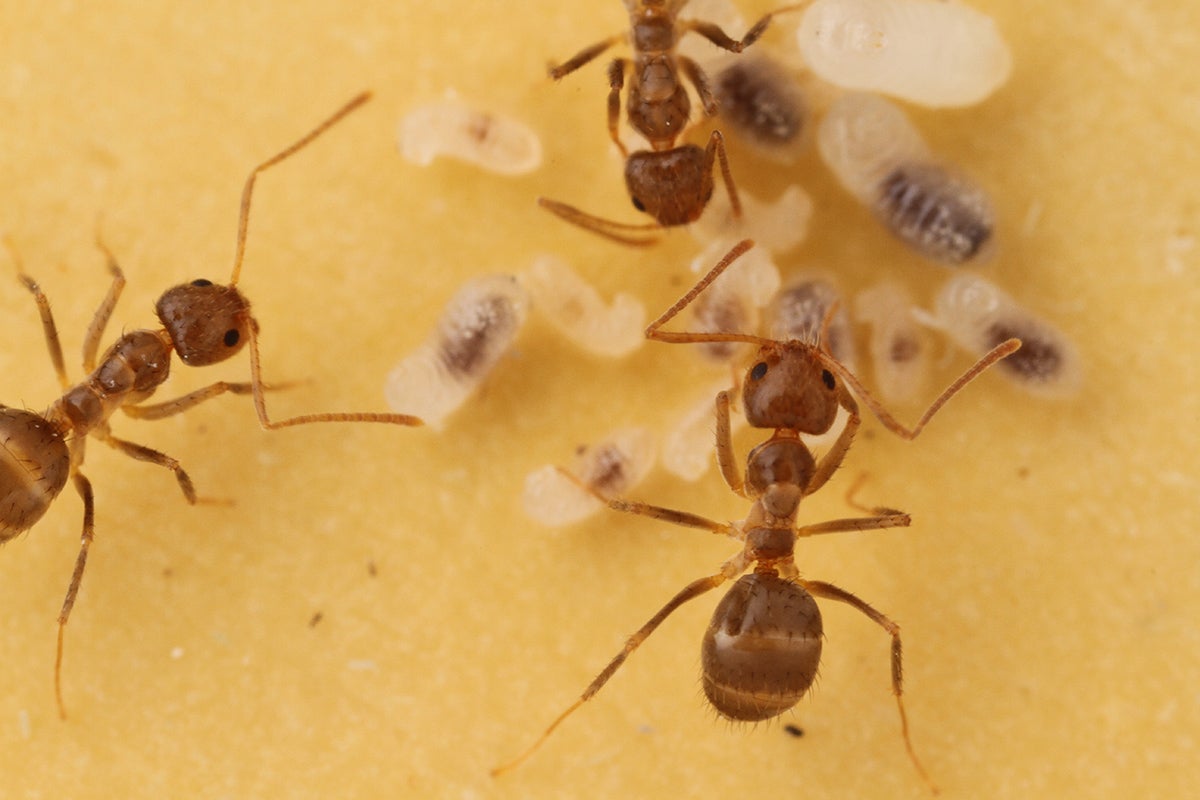The Lesser of Two Weevils: Size Differences in Some Insects Lead to Tradeoffs in the Competition for Mates
The largest males have bigger weapons, but smaller males have other advantages.

Photo by Ummat Somjee
When it comes to some members of the insect world, size variations can be mind-boggling. A researcher at The University of Texas led a study of the jousting weevil, a type of beetle that lives in Panama, and discovered, for example, that the largest members of the species can be up to 26 times as big as the smallest members.
When a tree falls in a Panamanian forest, jousting weevils emerge for a rare and ephemeral opportunity to reproduce. This insect only lays its eggs in dead trees. Females start hunting for the perfect place to lay their eggs and use their elongated heads to drill holes in the wood. Meanwhile, the males mate with the females and fertilize their eggs.
The larger males fight each other for females, using their extremely long heads like knights’ lances to knock each other around.
“They’re like boxers, circling each other in the ring, testing each other, sizing each other up,” said Ummat Somjee, a Stengl-Wyer scholar in the Department of Integrative Biology at UT Austin, who published related research recently in the journal Evolution. “Meanwhile, the smaller males have a few of their own adaptations.”
Such a large size difference in a single species is unusual. Somjee, who is also a research associate at the Smithsonian Tropical Research Institute, and his fellow researchers looked at dozens of other species of insects, and even at mammals and vertebrates and found that the size difference between the largest and smallest reproductive members of most species is about three times.
With a size difference of 26 times for males and 22 times for females, the jousting weevil has one of the largest variations on Earth, Somjee said. It’s second to only the giraffe weevil of New Zealand, which is a genetic cousin.
To put that in human perspective, the length variation within this species is more than the difference between an average human and an adult giraffe.
The size difference among jousting weevils allowed researchers to ask some questions about certain traits involved in sexual competition and how those compared to overall body size.
The size difference among jousting weevils allowed researchers to ask some questions about certain traits involved in sexual competition and how those compared to overall body size.
They found that among jousting weevils, the largest males had disproportionately large weapons that made up about 69 percent of their body length. That would be a like a boxer with a 4-foot-tall fist.
While the larger male weevils have larger weapons relative to their body size, the smaller male weevils have larger testes and genitalia relative to theirs, researchers found. This may offer the smaller males the ability to produce more sperm to fertilize eggs, Somjee noted.
Smaller males also have relatively larger spines on their genitalia that remove the sperm of other males from the females, giving them a better chance at fertilizing more eggs.
“In the jousting weevil, we see that larger males invest more in traits with advantages pre-mating and the smaller males invest more in traits with advantages post-mating,” Somjee said. “It’s a pretty fascinating balance that plays out.”
Peter Marting of Auburn University, Salvatore Anzaldo of Arizona State University, Leigh W. Simmons of University of Western Australia and Christina J. Painting of University of Waikato in New Zealand are also authors on the paper. The research was funded by the Earl S. Tupper Fund from the Smithsonian Tropical Research Institute and the Stengl-Wyer Scholars program at UT Austin.
Videos by Peter Marting.



